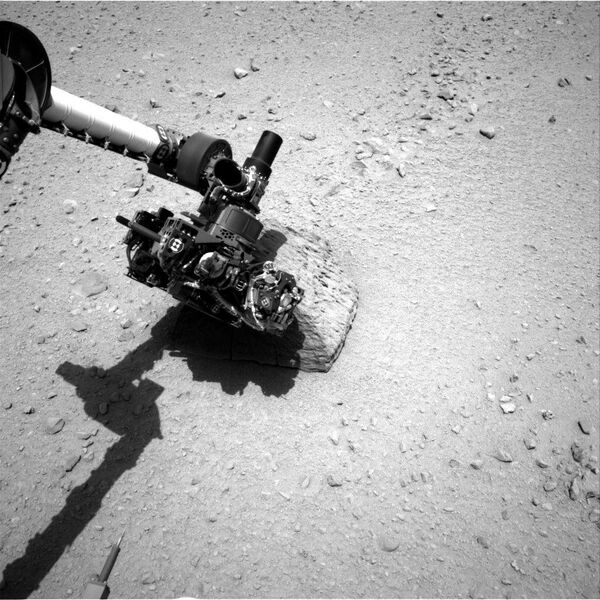The first rock on Mars that NASA's rover Curiosity has touched presents a more varied composition than scientists expected from previous missions, NASA reported.
Curiosity used two of its tools, the arm-mounted Alpha Particle X-Ray Spectrometer (APXS) and the mast-mounted, laser-zapping Chemistry and Camera (ChemCam) Instrument, to study the chemical composition of the football-size rock called “Jake Matijevic.”
Jake also resembles unusual rocks from Earth's interior, NASA said.
"This rock is a close match in chemical composition to an unusual but well-known type of igneous rock found in many volcanic provinces on Earth," said Curiosity co-investigator Edward Stolper of the California Institute of Technology in Pasadena.
"Jake is kind of an odd Martian rock," said APXS Principal Investigator Ralf Gellert of the University of Guelph in Ontario, Canada, adding that the rock is “high in elements consistent with the mineral feldspar, and low in magnesium and iron."
Unique compositions were found by ChemCam at 14 target points on Jake.
During the rover's two-year mission, researchers will use the its 10 science tools to assess if the selected field site inside Gale Crater has ever had environmental conditions suitable for microbial life.



